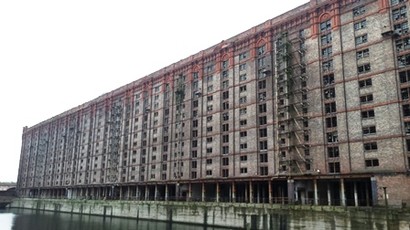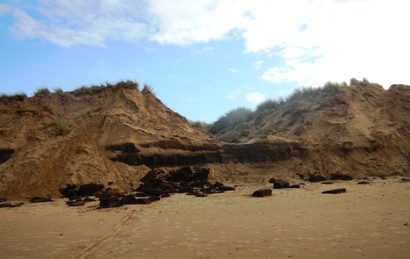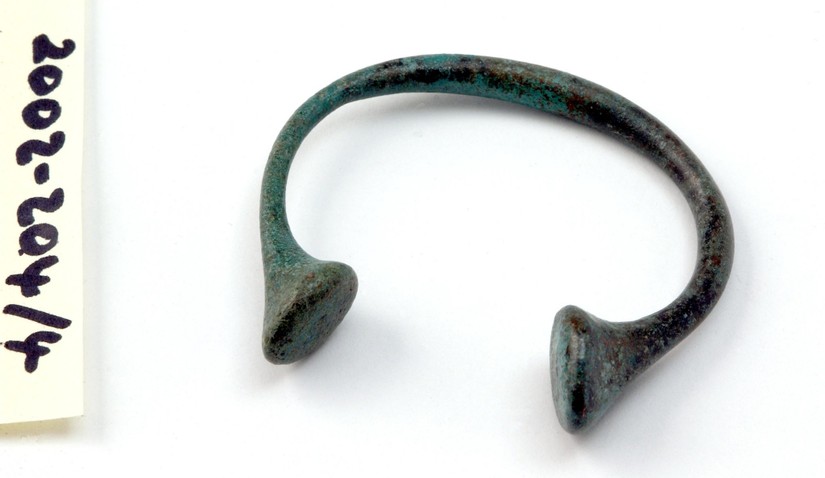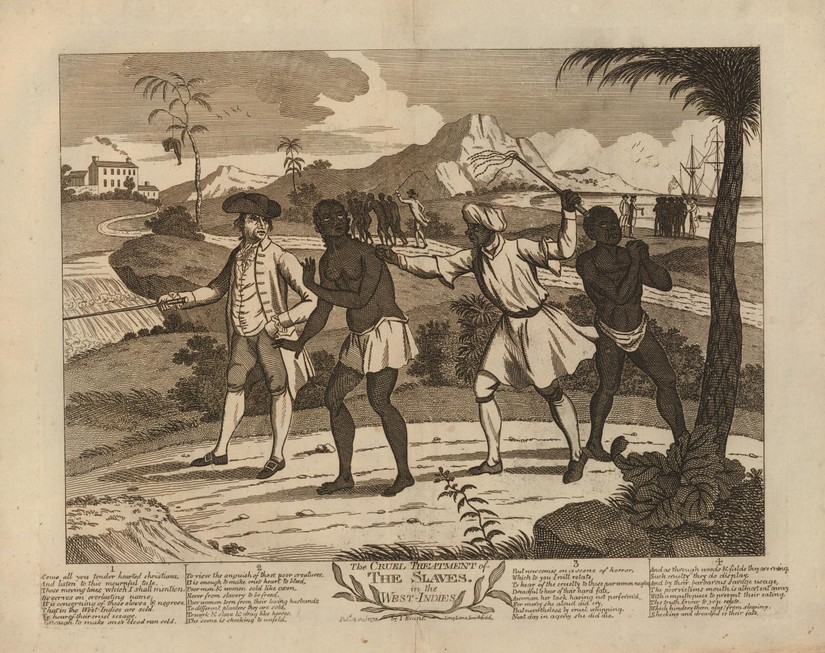Sugar, cotton and tobacco - Liverpool's role in the trade in enslaved Africans
30/10/2020 | Andy Sherman
As you head north through Liverpool, along the banks of the Mersey away from the heart of the World Heritage Site, the Beatles statue and Albert Dock you’ll reach Stanley Dock and the Tobacco Warehouse. Now being converted into luxury flats, this was the largest warehouse in the world when first built, made from 27 million bricks. Built to hold 60,000 hogsheads of tobacco each weighing 1,000lbs. Head further north around Liverpool Bay and you’ll eventually stumble over thousands of tons of waste tobacco dumped at Formby and now spilling onto the beach. The tobacco was abandoned on old asparagus fields in the 1950’s and 60’s after being spoilt on the voyage over to Liverpool. Both features form tangible links to when Liverpool was a bustling port, the second city of Empire with millions of tons of cargo coming through its docks.


Many of the early records for the docks and wharves of Liverpool have been lost, but what survives shows that tobacco and sugar were key components of the town’s early deep-water trade, both of which were grown and harvested by enslaved Africans. The port book of 1672 records a single vessel unloading tobacco from Chesapeake Bay and four carrying sugar from the West Indies. By 1709 that had risen to 24 ships unloading tobacco and 14 bringing in shipments of sugar, an increase that would keep climbing as the years went on1. As Liverpool grew into the largest port on England’s west coast, her merchants would expand from dealing in crops produced by enslaved Africans to running the slave trade.
Liverpool was relatively late entering the trade, not being an active participant till the early 1700’s when London and Bristol had developed into Britain’s largest ports in the slave trade. Within a few decades Liverpool would overtake both cities, eventually become the largest slaving port in Europe – a condemnable position the city would hold until the abolition of slavery in the British Empire.
Number of voyages to Africa between 1695 and 1807 from:
Liverpool - 5300
London - 3100
Bristol - 2200
Other European ports - 450 (Amsterdam, Barcelona, Bordeaux, Cadiz, Lisbon, Nantes)2
Eventually this repugnant trade would see 1.7 million enslaved Africans transported to colonies in America and the Caribbean on Liverpool owned or financed ships3.
Ships would leave the Mersey for the west coast of Africa with their holds stuffed full of goods to trade for captured Africans. Packed into the them would be brass, copper and iron in the form of manilas, bars, rods and wire, either worn as decoration, used as a form of currency or melted down for reuse. A ship’s hold would be bulging with glass beads, bundles of cloth, pots and pans, alcohol, knives, guns and cowrie shells. The cloth came from Lancashire, the metal came from Wales, Sweden, Russia and Spain, the glass beads from Italy and Germany, the guns were made in Birmingham. A national and international network filled the holds of Liverpool ships.

Enforced transportation across the Atlantic must have been terrifying for the enslaved Africans, and many did not survive the journey. John Newton, a crewman and captain of ships engaged in the trade in enslaved Africans before he became an abolitionist, sailed out of Liverpool frequently. After thirty years at sea he described what he saw on a British slave ship in the 18th century. “The slaves lie in two rows, one above the other, on each side of the ship, close to each other, like books on a shelf. I have known them so close, that the shelf would not easily contain one more …. the poor creatures thus cramped for want of room, are likewise in irons, for the most part both hands and feet, two together, which makes it difficult for them to turn or move, or to attempt to rise or to lie down, without hurting themselves or each other.”4
Most Liverpool-owned ships then took their cargo of enslaved Africans to British colonies in the West Indies, with the largest numbers being sold in Jamaica. Existence for an enslaved person on a plantation in Jamaica was hellish, with most expected to die from malnutrition, overwork and cruelty within three years of arrival. Other destinations for Liverpool enslavers included British colonies in Barbados, Grenada, Guiana, Antigua and St Kitts. Before the American Revolution captured Africans were also sold in British colonies in America, especially the Carolinas and Virginia. A limited trade was also run between Liverpool slavers and colonies owned by Spain, France, Denmark and the Netherlands.

Once an enslaver had sold his cargo of people, he would buy tropical goods with the profits – raw sugar, rum or molasses to feed the European habit for strong alcohol, sweetened drinks and cakes. Along with cotton, tobacco, coffee, hardwood timber, dyes and spices. Sales of enslaved Africans would often generate more profit then could be spent filling a hold full of tropical goods, so the remaining profit would be paid in bills of exchange, which could be redeemed back in England. Merchants from Liverpool began taking the entire profit from these sales in bills of exchange, meaning a ship spent less time portside. So, money could be saved on sailor’s wages, food bills and loading fees - anything to save money and exploit a bigger profit.
Liverpool is slowly coming to terms with its past at the heart of such a brutal and evil trade. As it does, it’s important to remember that much of the immense wealth that flowed along the Mersey stemmed from the trade of enslaved Africans. And the crops they were forced to produce. Sugar, cotton and tobacco.
To learn more about the trade in enslaved Africans and how it affected the continent visit the website of the International Slavery Museum.
- Stammers MK, Unknown, Ships and port management at Liverpool before the opening of the first dock in 1715
- International Slavery Museum - https://www.liverpoolmuseums.org.uk/international-slavery-museum
- Dresser M and Hann A (eds), 2013, Slavery and the British country house, English Heritage
- Tibbles A, 2018, Liverpool and the slave trade, Liverpool University Press








